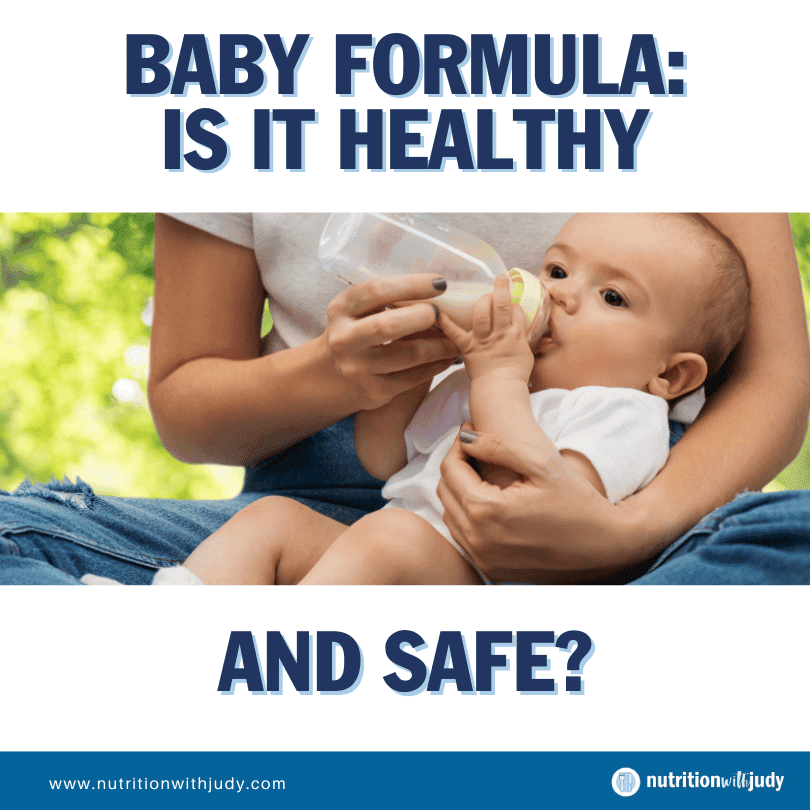

Baby Formula: Is It Healthy and Safe?


We have all seen the headlines about baby formula shortage. Many families are feeling desperate being unable to feed their precious babies, especially if their children have specific allergies to some ingredients in the formulas and they need a specific brand.
The reason for the shortage is that Abbott Laboratories, a major supplier of many popular baby formulas in the US, had to stop production due to a recall for bacterial contamination in the formula which caused the death of two infants. This ceasing of production along with the supply chain issues we have been hearing about for months turned into widespread baby formula shortages across the country.
You can imagine how painful this is for some families and we have all heard the stories of parents driving hundreds of miles to find the right formula that their baby needs.


But we really need to pause and think if this is the best nutrition for growing tiny humans. I will argue that it is not, and there are alternatives that are not breast milk, because not every mother can breastfeed.
Baby formula is not and has never been regulated by the FDA. There is no oversight on what should be included in baby formula. It has a history of being one great guess about what kind of nutrition a growing human needs.
According to Dr. Ruth Lawrence in her book, Breastfeeding: A Guide for the Medical Profession, she states that baby formula is “one of the largest human experiments in history.” Baby formulas have changed through the years, adding some ingredients and excluding others, but at no time has there been any scientific experimentation to collect data on the formula’s efficacy. They are basically being tested in real-time and on real babies without any clue as to how this might impact their health in the short and long term.
Baby formula started gaining popularity in the late 1800s. Before this time, breastfeeding was considered the way to feed a growing infant and babies who could not breastfeed were pitied. By 1883, twenty-seven baby formulas had been brought to market. Over time, providing a baby formula rather than breastmilk became viewed as just as good and in some cases, preferable. Many of these “Baby Formula is better than Breast” campaigns came from the formula manufacturers themselves with no data from the medical or scientific communities.
Original ingredients in these formulas are still widely being used today and include substances like milk, sugar, corn syrup, wheat flour, and malt. Today, more supplements are added and include alternatives to cow’s milk, for example, soy-based versions, but still contain large amounts of sugar and almost all contain vegetable seed oils.
Here is the ingredient list in today’s best-rated infant formula:
Water, Nonfat Milk, Lactose, High Oleic Safflower Oil, Soy Oil, Coconut Oil, Whey Protein Concentrate. Less than 0.5% of: C. Cohnii Oil, M. Alpina Oil, 2′-Fucosyllactose, Short-chain Fructooligosaccharides, Beta-Carotene, Lutein, Ascorbic Acid, Soy Lecithin, Monoglycerides, Potassium Citrate, Calcium Carbonate, Potassium Chloride, Carrageenan, Ferrous Sulfate, Magnesium Chloride, Choline Chloride, Choline Bitartrate, Taurine, Inositol, Calcium Phosphate, Zinc Sulfate, Potassium Phosphate, d-Alpha-Tocopheryl Acetate, Niacinamide, Calcium Pantothenate, L-Carnitine, Vitamin A Palmitate, Copper Sulfate, Thiamine Hydrochloride, Riboflavin, Pyridoxine Hydrochloride, Folic Acid, Manganese Sulfate, Phylloquinone, Biotin, Sodium Selenate, Vitamin D3, Vitamin B12, Salt, Potassium Iodide, Potassium Hydroxide, and Nucleotides (Adenosine 5′-Monophosphate, Cytidine 5′-Monophosphate, Disodium Guanosine 5′-Monophosphate, Disodium Uridine 5′-Monophosphate).
Again, none of this has been tested for effectiveness and safety.
Conversely, a mother’s breast milk is composed of 87% water, 3.8% fat, 1.0% protein, and 7% lactose. It also contains minerals, digestive enzymes, hormones, and bioactive molecules, not limited to stem cells and macrophages, to name a few. This is why breast milk is so protective for infants in terms of overall immunity, not to mention the skin-on-skin contact with mom that teaches our limbic systems that we are safe, loved, and can relax and digest.
Although we have acquired data on the health of adults who were formula-fed. Researchers have discovered that formula-fed infants have an increased risk of allergic reactions, an increased risk of developing Types 1 & 2 Diabetes, and an increased risk of developing other chronic diseases. They have also discovered that “Formula fed babies are sicker, sick more often, and are more likely to die in infancy or childhood.” Additionally, research shows that breastfed infants have less incidence of obesity and better metabolic health overall than their formula-fed counterparts.
The beautiful thing about breast milk is that it changes as your baby develops. The innate wisdom of our bodies is on display as the components of our breast milk will alter over time to meet the needs of our growing child. This is something that formula cannot do; it is consistently the same formulation without acknowledgment of our baby’s changing needs.
We know that breast milk is best for babies, but not all mothers can breastfeed. What should you do if you are unable to breastfeed? Fortunately, the Weston Price Foundation has some wonderful recipes for homemade nutritional formulas. They have several listed here, although I would be careful about the liver-based recipe as too much Vitamin A can be toxic, especially to children. Additionally, I would be more mindful about the Omega 6 to 3 ratio and leave out the cod liver oil as well as supplement a different fat for the seed oils, like beef tallow or coconut oil.
Adapted Weston A Price Formula:
Ingredients
- 2 cups whole raw cow’s milk, preferably from pasture-fed cows
- 1/4 cup homemade liquid whey (See recipe for whey, below) Note: Do NOT use powdered whey or whey from making cheese (which will cause the formula to curdle). Use only homemade whey made from yoghurt, kefir or separated raw milk.
- 4 tablespoons lactose
- 1/4 teaspoon bifidobacterium infantis
- 2 or more tablespoons good quality cream (preferably not ultra pasteurized), more if you are using milk from Holstein cows
- 1/2 teaspoon unflavored high-vitamin
- 1/4 teaspoon high-vitamin butter oil (optional)
- 1 teaspoon expeller-expressed sunflower oil
- 1 teaspoon extra virgin olive oil
- 2 teaspoons coconut oil
- 2 teaspoons Frontier brand nutritional yeast flakes
- 2 teaspoons gelatin
- 1-7/8 cups filtered water
- 1/4 teaspoon acerola powder
Note: Nutrition with Judy does not recommend giving babies cod liver oil.
Instructions
- Put 2 cups filtered water into a pyrex measuring pitcher and remove 2 tablespoons (that will give you 1-7/8 cups water).
- Pour about half of the water into a pan and place on a medium flame.
- Add the gelatin and lactose to the pan and let dissolve, stirring occasionally.
- When the gelatin and lactose are dissolved, remove from heat and add the remaining water to cool the mixture.
- Stir in the coconut oil and optional high-vitamin butter oil and stir until melted.
- Meanwhile, place remaining ingredients into a blender.
- Add the water mixture and blend about three seconds.
- Place in glass bottles or a glass jar and refrigerate.
- Before giving to baby, warm bottles by placing in hot water or a bottle warmer. NEVER warm bottles in a microwave oven.
Mount Capra Formula:
Also, Mount Capra has a recipe listed here on their site, which would be more beneficial than conventional formulas. Again, on this one, I recommend an adjustment in the fat used.
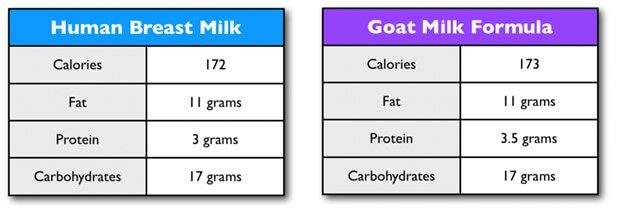

Images Source: Mt. Capra
I know that we all want our children to have the best start in life and that breast milk is the gold standard, but this is not always available to all moms. Therefore, turning to better alternatives, such as the homemade formulas listed above, will get their nutrition closer to the real thing. Making these decisions is not always easy but having all the information and knowledge helps.


The reality is that infant formula is a heavily industrialized and processed food and not ideal for growing healthy people. We know processed foods do not favor us, so why would we feed that to our most vulnerable population?
By making formula from scratch, we know what is in the homemade recipe, and we can feel more confident about supporting our baby’s growing body. By learning how to make our own formula, we don’t feel as threatened by corporate formula shortages. We no longer are at the whim of the manufacturers and can feed our babies without their questionable products.
Children are precious, and goodness knows life is hard enough so we should give them the best nutrition and tools right from the start.
You can find other Nutrition with Judy children resources here.
If you’re interested in children’s nutrition or supporting your own wellness journey, Nutrition with Judy is accepting new clients. Our youngest client has been five months old.
The best way to start is with a Symptom Burden Assessment and consult to get you where you want to go with your healing journey.
DISCLAIMER: The content is for educational purposes only. While I am board-certified in holistic nutrition and a nutritional therapy practitioner, I am not providing medical advice. Whenever you start a new diet or protocol, always first consult with your trusted practitioner.


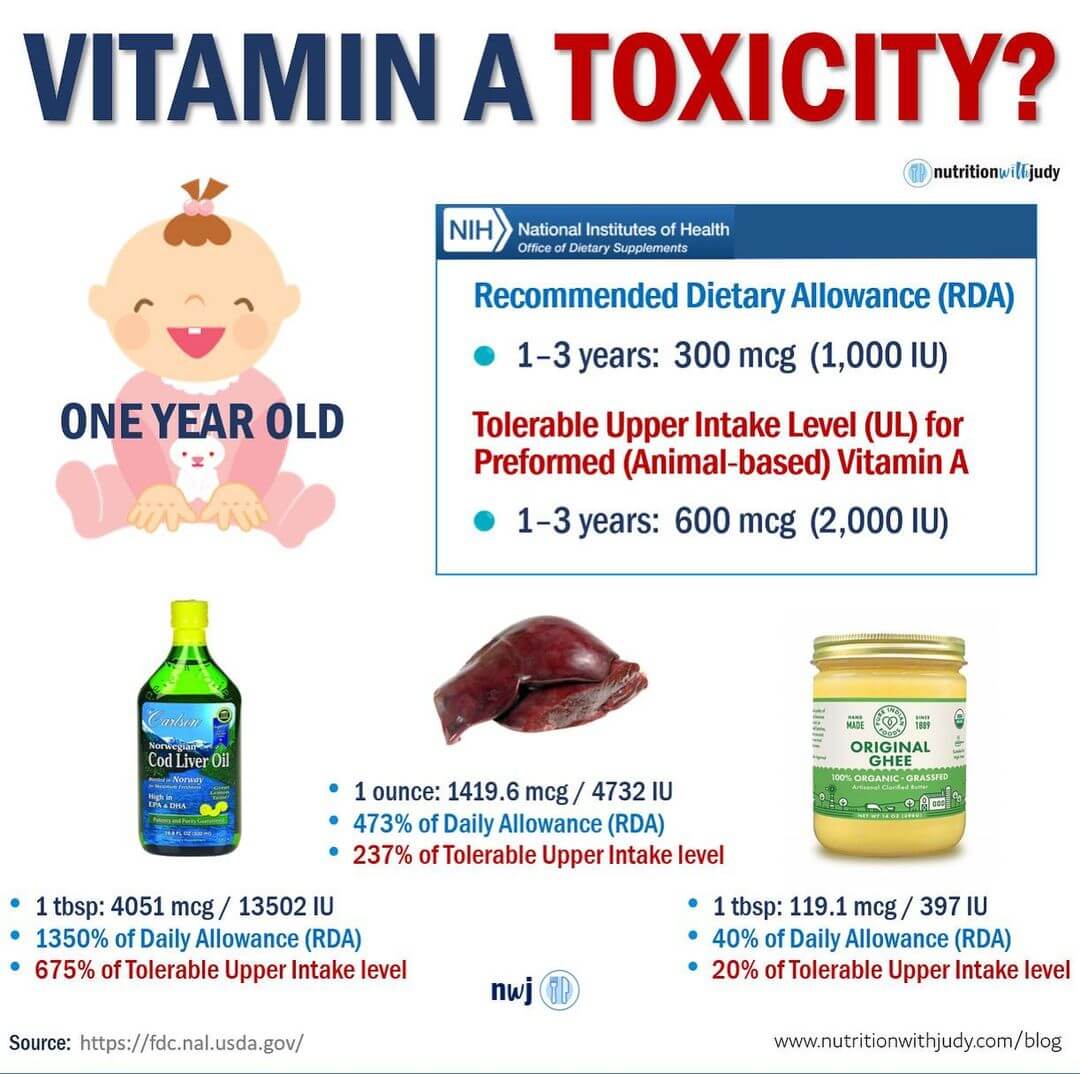
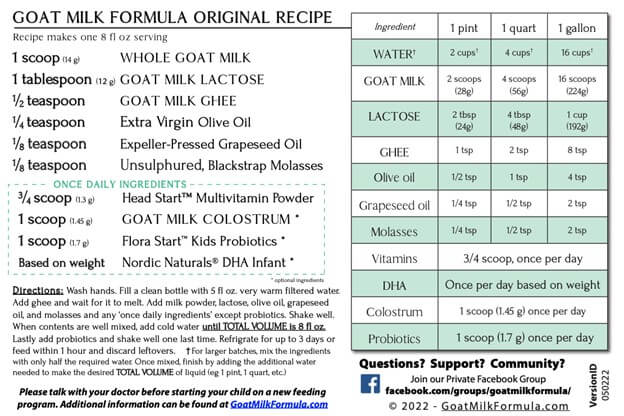

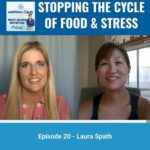
Ariel Murdoch
April 15, 2023 at 11:44 amWhy do you not recommend Cod Liver Oil for babies? I have been using this formula and have started not putting the CLO in the mix but just giving it with a syringe (just over .25 tsp worth). Just wondering so I can understand better. Thanks!
Ariel Murdoch
April 15, 2023 at 11:45 amBy “this formula” I mean the Weston a. Price formula. Thanks!
Nutrition with Judy
June 26, 2023 at 2:48 pmBecause: https://nutritionwithjudy.com/liver-and-risks-of-vitamin-a-toxicity/
Ariel Murdoch
May 1, 2023 at 9:54 pmWhat would you feed your one year old instead of Cod Liver Oil for vitamin A?
Nutrition with Judy
June 26, 2023 at 2:47 pmNo, Never. Please read this: https://nutritionwithjudy.com/liver-and-risks-of-vitamin-a-toxicity/